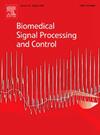优化机器人辅助治疗的非辅助身体部位运动
IF 4.9
2区 医学
Q1 ENGINEERING, BIOMEDICAL
引用次数: 0
摘要
学会控制运动中的肌肉在康复中是必不可少的。利用生物反馈和机器人技术来诱导肌肉活动是近年来研究的热点。人体肌肉骨骼系统具有复杂的肢体间相互作用,在以往的研究中,通过固定非辅助身体部位来简化这种相互作用。本研究提出了一个框架,通过优化机器人康复中非辅助身体部分的参考轨迹,诱导所需的肌肉活动模式,并为用户提供视觉反馈。在该框架中,采用个体模型学习和轨迹优化方法,考虑了康复时隙的约束条件。通过对12名健康受试者的实验,验证了其性能。结果表明,与没有优化非辅助身体部位运动的基线相比,通过减少目标和诱导肌肉激活之间的差异,提高了有效性和可行性。本文章由计算机程序翻译,如有差异,请以英文原文为准。
Optimizing non-assisted body part movements for robot-assisted therapy
Learning to control muscles in movement is essential in rehabilitation. The use of biofeedback and robotics to induce muscle activity has been investigated in recent years. The human musculoskeletal system has complex inter-limb interactions, which have been simplified in previous studies by immobilizing non-assisted body parts. This study proposes a framework to induce the desired muscle activity pattern and provide visual feedback to the user by optimizing the reference trajectory of the non-assisted body part in robotic rehabilitation. In the proposed framework, an individual model learning and trajectory optimization method was utilized to consider the constraints of the rehabilitation time slot. Its performance was verified through experiments on 12 healthy subjects. The results show improved effectiveness and feasibility, achieved by reducing the discrepancies between targeted and induced muscle activations, compared to the baseline, which did not optimize non-assisted body part movements.
求助全文
通过发布文献求助,成功后即可免费获取论文全文。
去求助
来源期刊

Biomedical Signal Processing and Control
工程技术-工程:生物医学
CiteScore
9.80
自引率
13.70%
发文量
822
审稿时长
4 months
期刊介绍:
Biomedical Signal Processing and Control aims to provide a cross-disciplinary international forum for the interchange of information on research in the measurement and analysis of signals and images in clinical medicine and the biological sciences. Emphasis is placed on contributions dealing with the practical, applications-led research on the use of methods and devices in clinical diagnosis, patient monitoring and management.
Biomedical Signal Processing and Control reflects the main areas in which these methods are being used and developed at the interface of both engineering and clinical science. The scope of the journal is defined to include relevant review papers, technical notes, short communications and letters. Tutorial papers and special issues will also be published.
 求助内容:
求助内容: 应助结果提醒方式:
应助结果提醒方式:


